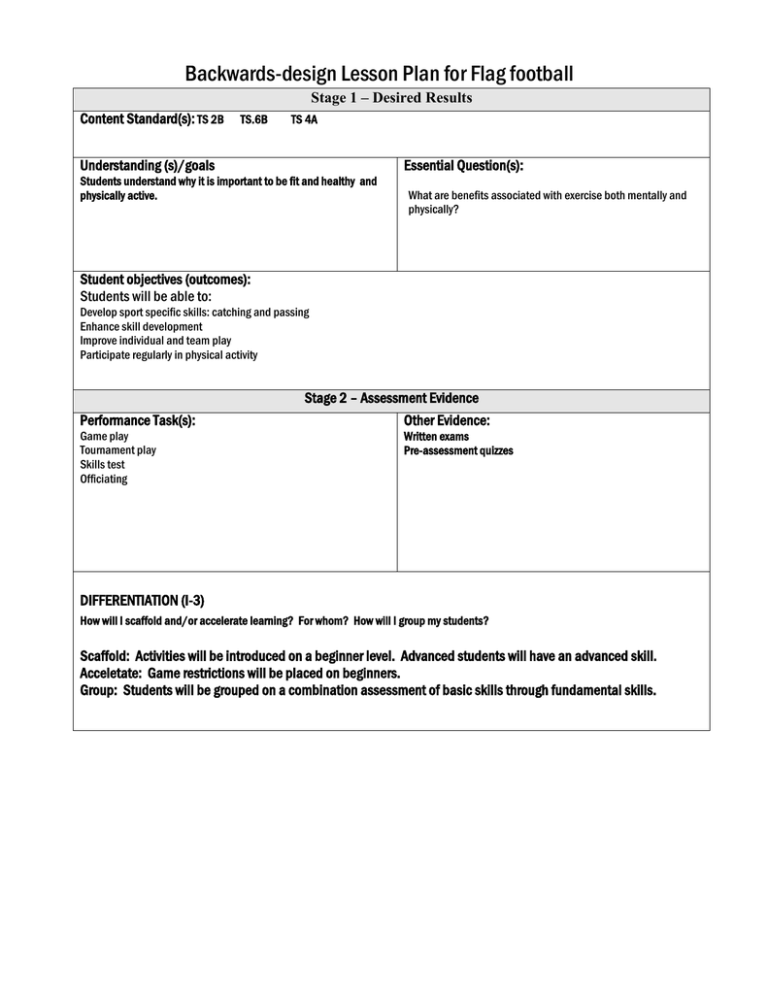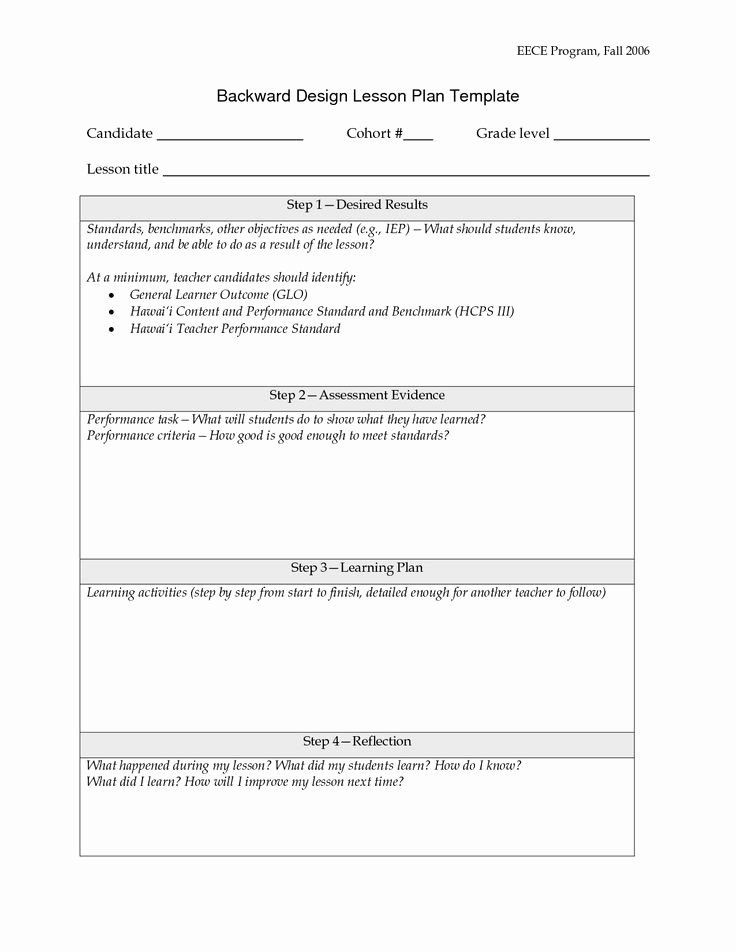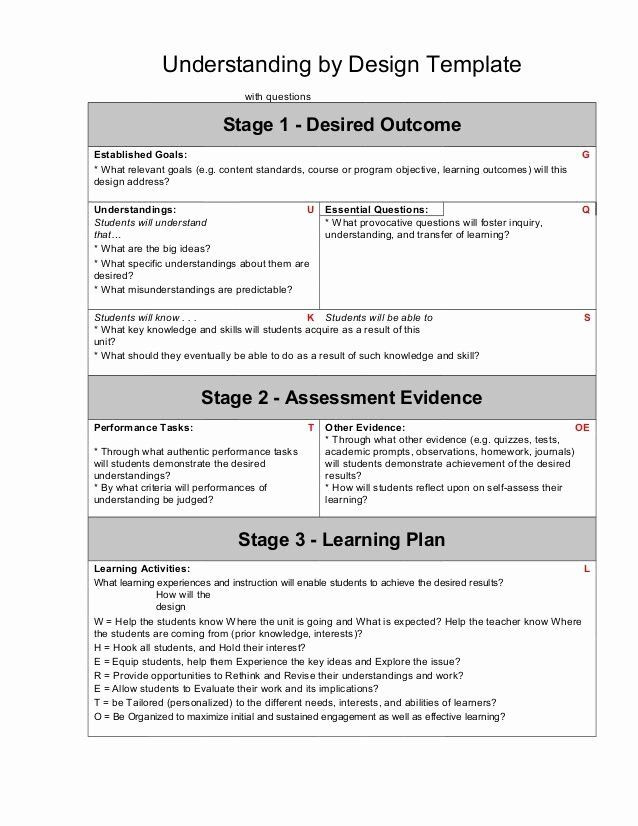Table Of Content

Learning outcomes describe what students know or can do, not what the instructor does. Remember that “students” is the subject of the generic learning outcome stem shown at the beginning of this section. The goals for your course should not be stated in terms of what the instructor will cover, but rather in how the students will change, facilitated by the instructor’s guidance. There are many resources, including templates and examples, available to help guide the Backward Design process.
Comparing Backward Design to Other Educational Frameworks
All the lesson planning in the world won’t necessarily guarantee that students will retain and master new concepts. To gauge effectiveness and find evidence of learning, you’ll need to plan regular mini-assessments throughout the course of a unit or lesson. Following the UbD steps means that rather than abandoning lessons, I’m able to revisit and tweak them to realign the work toward my educational goals.
Contrast with Traditional Forward Design
However, it differs in that the learning process is far less structured, often initiated by a question or problem posed by the students themselves rather than pre-defined learning objectives. For instance, it's difficult to set specific, narrow learning goals for interdisciplinary courses like “Environmental Science” that integrate biology, chemistry, and social science. The challenge lies in encapsulating the breadth of these disciplines into a set of focused objectives without diluting the complexity and richness of the subject matter. So whether you're in a classroom filled with children, a university lecture hall, or a corporate training room, Backward Design offers a structured and effective way to reach your learning goals. This approach is flexible enough to be customized for any educational context. Another foundational theory supporting Backward Design is Bloom's Taxonomy, developed by educational psychologist Benjamin Bloom and his colleagues in 1956.
Tips for Back to School in the Math Classroom
And there we have it—a comprehensive look at Backward Design, from its origins and methodology to its benefits, challenges, comparisons with other frameworks, and practical tips for implementation. We hope this guide serves as a valuable resource for educators and curriculum designers alike, offering insights and strategies to enhance teaching and learning for all. Dr. Benjamin Bloom, who created Bloom’s Taxonomy of learning objectives, often adhered to this method. While it is still widely used, Forward Design can sometimes lead to misalignment between learning objectives and assessments, something that Backward Design explicitly seeks to avoid. You might hear teachers asking, "What are the desired outcomes?" or "What evidence of learning will we accept?" These questions show that the influence of Backward Design is widespread and still growing.
Strategies for Educators to Thrive in Post-Pandemic Teaching - FierceWireless
Strategies for Educators to Thrive in Post-Pandemic Teaching.
Posted: Fri, 18 Jun 2021 07:00:00 GMT [source]
In the well-known book The Seven Habits of Highly Effective People, author Dr. Stephen Covey describes seven habits that successful people tend to live by. The second habit is “Begin with the end in mind.” Dr. Covey was suggesting that the most successful people are those who create a vision of the future in their mind. They determine what they want to be and do, and then take actions to reach that result. This general life lesson can be applied in a classroom setting as teachers plan their lessons based on what they need their students to know. This last example provides intended learning outcomes for a subject focused more on soft skills, where measuring student ability objectively is significantly more nuanced and difficult.
Alignment of learning activities to assessments and feedback
The emphasis was on “lectures” and “discussions” and the assumption was that learning largely consisted of a passive activity in which students received information and ideas from authoritative sources. The inner circle identifies enduring understandings or big ideas that students should retain after they have forgotten many of the details (Wiggins and McTighe 1998, 9-10). The middle circle identifies what is important to know such as important knowledge (i.e, facts, concepts, and principles), as well as skills, processes, strategies, and methods. The role of feedback for learners is critical in advancing language proficiency. Feedback should be provided in multiple forms including formative, summative and self-assessment.
Considerations for Designing Online Courses
Assessment refers to the wide variety of methods or tools that educators use to evaluate, measure, and document the academic readiness, learning progress, skill acquisition, or educational needs of students. Six Common Planning Pitfalls – Recomendations for Novice Educators – This article looks at common mistakes made by novice teachers when planning lessons, including planning with no clear objective. Before implementing a new curriculum design strategy like Backward Design, it's often beneficial to consult with school or organizational administrators. Doing so can ensure alignment with broader educational goals and compliance with any applicable standards or regulations.

Developing a backward design lesson plan step by step
Backwards design focuses on the destination and then plans the route, rather than the other way around. Regardless, the key to teaching valuable and effective lessons that actually teach your students is moving beyond planning one lesson at a time, piecemealing a unit together as you go. With backward design, every lesson and activity is part of a bigger learning journey. Students are inching closer to their overall learning goals for said unit each day. As you can see, there are lots of advantages to implementing backward design lesson plans into your curriculum or teaching schedule at the earliest opportunity.
This, again, narrows focus and ensures that content is the means, and skill acquisition and transfer are the end. The foreign policy unit is shorter and is part of an elective course, so my goals differ. I want them to have a concrete understanding of what foreign policy is and the motivations thereof. I also want to flex their organizational muscles, because their notebooks and ability to hang on to handouts without losing them is awful!

Instructional activities are the ways in which students will actually interact with the content. Activities can be passive such as listening to a lecture or watching a video, or active such as using manipulatives in math or holding small group discussions. Once you have set a learning objective, how will you determine if students have met the standard?
If you’re new to the grade, the Common Core Math Companion is a great place to start because it spells out the standards complete with the misconceptions kids have for many years and it even gives examples. Before I’ve even planned a lesson, I should already know what the end result should be. I know what my expectations are, what skills my kids need to have and what misconceptions they are going to have. This fly-by-the-seat-of-my-pants planning also resulted in a significant amount of work on my part. I would deem the lesson a failure and abandon it in favor of new exercises, assessments or lectures.
In contrast to the traditional “forward design” approach, backward design begins by establishing learning goals and then developing assessments and teaching methods to achieve the desired outcomes. You need to scaffold, step-by-step the skills and content knowledge needed to complete the final assessment. There will be many mini-assessments, aka formative assessments, along the way to measure student readiness for the final task. Do-now tasks, exit tickets, quick multiple-choice quizzes along the way will tell you how the kids are doing.
Normally, or with traditional lesson planning, you focus on standards and learning objectives. Design your tests and assessments first, then figure out your lesson plans, then teach your students. Abackward design lesson plan can be an excellent way to improve your student outcomes and learning processes. If you’re an online course creator, an online tutor, or a teacher of any other type, you probably develop your lessons in the same way.
An important part of aligning content to your assignments and assessments is limiting or eliminating material that is redundant or unnecessary. In other words, if it does not align to a learning outcome, you probably do not need to include that content. To thoroughly describe what meeting your goals looks like in practice, you will likely develop at least three to four learning outcomes for each goal.


No comments:
Post a Comment